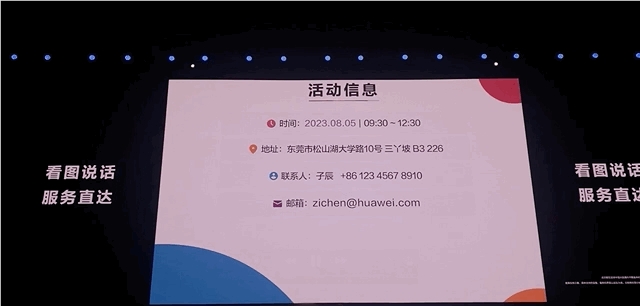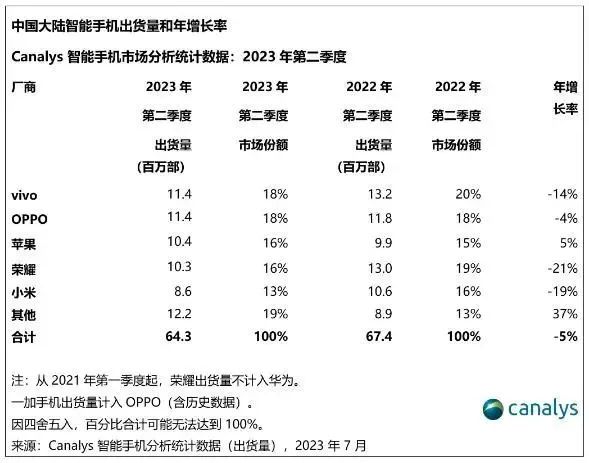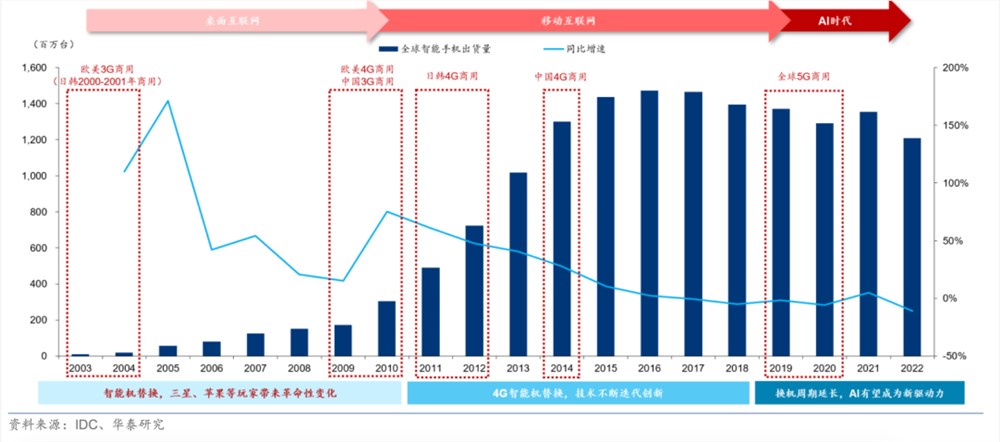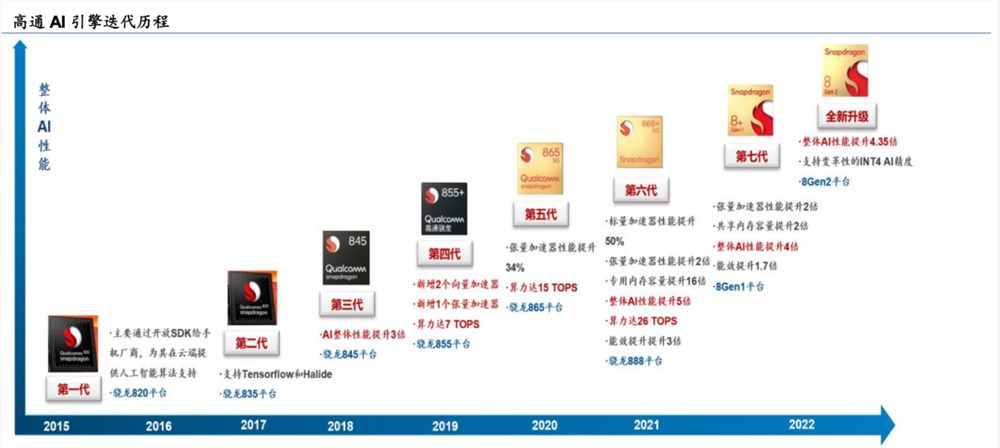OpenAIThey might be planning to build a mobile phone, and it might be an AI phone designed specifically for ChatGPT.
Recently, according to The Information, OpenAI CEO Sam Altman has been working with iPhoneFamousDesigner Jony Ive was contacted to discuss the development of a new AI hardware device.
SoftBank CEO Masayoshi Son is also interested and has "discussed the idea with both of them."
Although the tripartite cooperation has not yet been finalized, considering that Masayoshi Son has always boasted about being a "heavy user" of ChatGPT, this seems likely.

Source Note: The image is generated by AI, and the image is authorized by Midjourney
On the one hand, AI companies are preparing to advance into the hardware field; on the other hand,Mobile phone manufacturersWe are also stepping up to embrace the AI big model.
On October 4th, Eastern Time, Google released the Google Pixel 8 series of mobile phones equipped with Google AI basic models and "focused on artificial intelligence" -— Considering that Google originally released the AndroidThe system once led feature phones to leap into the smartphone era. Google's entry this time may have opened the prelude to AI phones.
Domestic mobile phone manufacturers are also flocking in.
On October 11, OPPO announced that the trial experience of the new Xiaobu Assistant 1.0Beta version based on its self-trained Andes Large Scale Model (AndesGPT) has officially started. The upgraded Xiaobu Assistant will have AI large model capabilities.
This is another mobile phone manufacturer that has launched actual testing of a mobile phone smart assistant with a built-in AI big model, following Xiaomi's announcement of the internal testing of XiaoAi, a mobile phone smart assistant with a built-in AI big model.
Huawei has taken even bigger steps, from announcing that its mobile phone system would be connected to the Pangu big model, to launching public testing of Xiaoyi, a voice assistant with a built-in big model, to releasing the new Huawei Mate60 series with a built-in AI big model, all in just over a month.
Although vivo has not made any actual progress in the application of large models, its self-developed 7 billion parameter large model vivo_Agent_LM_7B has appeared on the C-Eval and other lists in August; and the official also announced the release of the self-developed large model at the Boao Forum for Asia International Science and Innovation Forum in September.
Honor is even more anxious. In early July, it released a product called "GlobalFirstThe "Magic V2", a domestic mobile phone with native integrated AI big model, has attracted a lot of attention; but there has been no news about the progress of its self-developed big model. Instead, it stated that it would "cooperate with Internet companies in the field of network big model."
…
It is obvious that mobile phone giants at home and abroad are eager to work hard on big AI models. This is mainly because the mobile phone market is weak in innovation and can no longer be expanded; and "putting big models into mobile phones" is likely to achieve a revolutionary breakthrough in mobile phone functions and experience, which is expected to trigger a new round of mobile phone replacement.
one
AI phones are expected to cure market involution?
Why are domestic mobile phone manufacturers so eager to develop large AI models?
The most direct value is the improvement of mobile phone performance and experience.
When AI big models are integrated into mobile phone systems, on the one hand, they can enhance the phone's ability to process tasks such as images, voice, and natural language processing, significantly improving mobile phone performance; on the other hand, they can respond to user needs more flexibly and improve user experience. As AI algorithms evolve and the big models loaded on the end have a deeper understanding of users, mobile phones can predict user behavior and optimize in advance, becoming smarter and more intelligent, changing from "one phone for one thousand people" to "one thousand phones for one thousand people."
The large AI model deployed locally on the mobile phone can not only enable AI to optimize and empower various apps, but can even serve as a universal interface to break down barriers and allow free combination of app capabilities, thereby improving user experience and product competitiveness.
The Huawei Mate60 series and Google Pixel8 series of mobile phones, which were the first to implement AI large models in China and abroad, are examples of this.
Huawei phones have long applied AI capabilities to enhance mobile phone image processing. After the large AI model was built into the system, the most obvious improvement in the experience was its mobile phone voice assistant Xiaoyi.
Different from generative AI chatbots such as OpenAI's ChatGPT and Google Bard, Huawei's Xiaoyi has been reconstructed at the bottom layer of the HarmonyOS operating system.
That is, the first two are just AI applications loaded on mobile phones, while Xiaoyi uses the big model as the brain of the intelligent system and leverages the high-level capabilities of the big model to comprehensively enhance the system capabilities.
With Pangu's big model as its underlying support, Xiaoyi not only achieves a leap forward in natural language understanding capabilities, but can also use generative AI to do many more things for users, such as summarizing information, writing articles, replying to emails, composing memos, and recreating pictures.
It not only meets daily needs, but can also assist work. For example, if you want to invite a partner to a meeting, you can directly tell Xiaoyi the meeting time, invited people, and discussion content, and Xiaoyi will be able to write a meeting invitation email.
What is more worth mentioning is that Xiaoyi has indeed broken down the barriers between APPs and cope with more complex user demand scenarios.
For example, for a poster image, if you ask Xiaoyi for relevant address information and ask her to navigate to the target location, Xiaoyi can accurately identify the address information in the poster and open the navigation app for navigation.

For example, if you want to find a steak restaurant, Xiaoyi can accurately understand the intention and directly call Meituan service to find relevant restaurants.
The enhanced image processing capabilities of the Google Pixel 8 series of mobile phones are also amazing.
Through generative AI, the Magic Editor in Google Photos can use photos that have already been taken, manually select another expression from other photos, and generate a new photo, ensuring that "everyone has their eyes open."
In addition, this function can also erase unnecessary background and debris in the photo, so that those who have high-end mobile phones but cannot take qualified photos can also become masters of taking photos.
The improvement that the AI big model brings to the functional experience of mobile phones is obvious and can meet the needs of users. It may stimulate a large number of users who want to try new things to change their phones and break the dilemma of homogeneous internal circulation in the mobile phone industry with lack of innovation.
According to market research firm Canalysup to dateAccording to the report, as of the second quarter of 2023, China's smartphone market shipments were approximately 64.3 million units, a decrease of 5% from the same period last year; the global smartphone market was also lackluster, with shipments in the second quarter of this year down 10% year-on-year.

In the declining market, the high-end market is relatively popular. Canalys analyst Amber Liu pointed out that "consumers are increasingly willing to pay for high-quality products. Since last year, the average price of smartphones in China has exceeded US$450 and is expected to continue to rise in the next few quarters."
If AI phones can significantly improve the user experience, it may be possible for the domestic and foreign mobile phone markets to be activated again.
In its special research titled "Will AI Drive a New Round of Phone Replacement?", Huatai Securities pointed out that with the arrival of the AI big model era, AI is expected to become an important factor driving the next round of phone replacement. It is expected that the first batch of "AI mobile phones" will be launched in the second half of 2023. Currently, AI mobile phones mainly use NLP (natural language processing) and CV (computer vision) technologies. It is expected that more innovative AI applications will be implemented on mobile phones in 2024-2025.
At the second quarter 2023 earnings conference, MediaTek also expressed a similar view, believing that "the implementation of AI in mobile phones will accelerate the replacement cycle."
two
"Grabbing the beachhead" of large models, manufacturers have different progress
In fact, the mobile phone industry’s rush to seize the big AI model is not just following the trend. Leading manufacturers have been planning AI for some time and are making steady progress. In the early days, they were more focused on improving functions, but now they are gradually moving into the system level.
Although Huawei did not announce the integration of the large model into the mobile phone system until the release of the Hongmeng 4 system in August this year, the research and development of the Pangu large model had already started as early as September 2020. It has now been upgraded to version 3.0 and has been commercially used.
Another company that has been developing AI big models early on is OPPO.
Since 2020, the OPPO Xiaobu Assistant team has begun exploring and applying large language models.
Long before the launch of its large-scale AndesGPT project, OPPO had already invested heavily in AI, developed and explored pre-trained language models, and independently developed KgCLUE1.0, a large-scale knowledge graph question answering platform that ranked fifth in the overall ranking of the Chinese language understanding evaluation benchmark CLUE1.1, as well as the rankingFirstThe large model OBERT.
Although it is still unclear when vivo started to focus on AI big models, it has established its AI Global Research Institute in 2018 and launched it in August this year.authorityThe evaluation website submitted a large model with 7 billion parameters, vivo_Agent_LM_7B, and it seems that the time invested in research and development in related fields will not be short.
Xiaomi was not late in getting involved, having already started planning its AI efforts in July 2016. In April this year, it formally established a large model team in its AI laboratory.
As Luan Jian, head of the Big Model Team of the AI Lab of Xiaomi's Technology Committee, said, "The combination of mobile phones and AI has actually existed for a long time, such as adjusting photos during photography - fast focus, super resolution, etc. Now adding big models to mobile phones is an upgrade, which improves natural language interaction, including text processing capabilities, multi-modal processing capabilities, etc."
The reason why domestic mobile phone manufacturers are in a hurry to push their own AI models to the forefront in the past three or four months, and even integrate their applications into mobile phones, is that they want to take the initiative and seize the window of opportunity for the wave of phone replacement that may be brought about by AI mobile phones.

Mobile phone manufacturers are accelerating the implementation of big AI models, which is, to a certain extent, also a way of “self-rescue” for the weak consumer demand.
According to the above content, except for Honor, which has no news on the progress of its self-developed big model, most of the domestic mobile phone giants have basically chosen to develop their own AI big models. However, due to their own restrictions and different start times, the progress of implementation is not the same.
Huawei, which has built its own ecosystem, is currently consideredFirstThe first domestic mobile phone manufacturer to implement mobile phone AI large models in new phones.
The next ones are OPPO and Xiaomi. Although they have not officially released new models with built-in AI big models, they have launched public and internal beta tests of their new mobile assistants with built-in AI big models, taking the first step to integrate AI big models with mobile phone systems.
OPPO has a more comprehensive overall consideration and has done a good job of running-in with upstream manufacturers in advance. While training the AndesGPT large language model independently, OPPO also cooperated with MediaTek, hoping to use its 4-bit quantization technology to achieve better performance on the end without losing accuracy, and promote the lightweight implementation of AndesGPT on the end as soon as possible.
Although Vivio's self-developed large model has beenauthorityRanking list, but no specific implementation has been seen so far.
It is rumored online that vivo will launch a new OriginOS 4.0 system with a built-in AI big model around October this year. If a new phone with a built-in AI big model is launched at that time, vivo is expected to become the second mobile phone manufacturer in China after Huawei to implement AI big models in new phones.
Unlike Huawei, whose software and hardware are integrated, other mobile phone manufacturers will inevitably cooperate with upstream hardware manufacturers in the future while developing their own big models. With the help of their chips and lightweight technology, they can better promote the implementation of their own AI big models on mobile phones, which has more variables.
To a certain extent, whoever can coordinate with hardware manufacturers faster and accelerate the lightweight implementation of self-developed large models will be able to seize the initiative faster.
three
Self-developed big models: Will it eventually move towards end-cloud integration?
Another question is: with the current market "hundred-model war" in full swing, why don't mobile phone manufacturers adopt the principle of "take what is available" and directly call the open source interface of mature cloud-based large models, instead of developing their own large models on the end?
The reasons can be summarized in two key words: can't lead well and can't lead.
On the one hand, the specific application of large models deployed in the cloud, such as ChatGPT, has always been accompanied by strong privacy and security controversies.
For the locally deployed mobile phone AI large model, the data will not leave the terminal side, which better guarantees the privacy and security of user data.
Because the number of parameters is relatively light, the loading and running speed of large mobile phone models will be faster and will not be restricted by the network environment.
In addition, the lightweight large model deployed on the mobile phone has a short training cycle and can be quickly iterated and updated according to user needs, making it more flexible in responding to user needs.
Huatai Securities also asserted in the aforementioned research report that, unlike the high computing performance requirements of the training phase, the reasoning phase mainly uses the trained model for inference and prediction based on user needs, with lower requirements for peak computing performance and more emphasis on comprehensive indicators such as unit energy consumption computing power, latency, and cost.
Since cloud computing power and terminal devices need to be transmitted through network channels, distributing inference computing power only in the cloud will be limited by network bandwidth and transmission distance, and will not be able to meet the requirements of low latency, high reliability, etc. in some scenarios.
On the other hand, for large cloud models, as the demand for access increases and the frequency of use increases, the consumption burden of cloud computing power, network bandwidth, storage, hardware and other resources becomes heavier.
If mobile phone manufacturers place the driving force behind the mobile phone performance revolution on these "bulky" cloud models, the mobile phone performance experience will easily become unstable or even dragged into a quagmire.
Regarding the issue of self-developed end-side big models, Luan Jian, head of the big model team of the AI Laboratory of Xiaomi's Technical Committee, answered in an interview with Tencent Technology, allowing us to see their considerations from the perspective of mobile phone manufacturers.
Regarding self-research, Luan Jian believes thatDifferent chips are used in various device terminals. They differ in memory size, computing power, and operator sets supported by the platform. This requires the model to be able to dynamically adjust according to hardware conditions to achieveoptimalperformance.
An open source model has a fixed structure and cannot be adjusted, which limits its use. If you want to have the ability to customize the model structure and train from scratch, you must develop your own.
This also explains why mobile phone manufacturers have to develop large models on their own on the one hand, and strengthen their cooperation with hardware manufacturers on the other hand.
Luan Jian also pointed out that the large model on the terminal can better protect user privacy and allow users to obtain more functions at a lower cost, but this does not mean that all problems can be solved using the mobile phone.
Although hardware manufacturers such as Qualcomm and MediaTek have continuously improved quantization algorithms to ensure that the energy efficiency and performance of mobile phones are improved while lightweight large models are implemented on the end, it is undeniable that no matter how compressed the large AI model is, the parameter volume is still there, and the requirements for mobile phone hardware and performance will only become higher and higher.
The aforementioned Huatai Securities research report also pointed out that the large amount of calculations in AI models will place higher requirements on bus bandwidth; the continuously running inference tasks will accelerate device power consumption, driving the demand for battery capacity and corresponding power management chip upgrades.
As large-scale model predictions become more and more accurate, these problems will become more and more obvious, and may drive the upgrading of upstream and downstream industrial chains.
So, in addition to continuously optimizing quantization and other technologies and improving mobile phone configurations, what other solutions do mobile phone manufacturers have that can effectively cope with the higher requirements brought about by the evolution of large models on the end side?
In this regard, the "end-cloud integration" concept proposed by Xiaomi may be a realistic choice, that is, some capabilities or functions of future AI mobile phones can be solved on the end side if they can be solved by the end-side model; if they cannot be solved on the end side, cloud capabilities will be called upon.This not only ensures privacy and security, accurate understanding of and flexible response to user needs, but also ensures the implementation of more complex and advanced operations and optimizes the user experience.
Qualcomm also proposed a similar idea to Xiaomi.
In the technical white paper "Hybrid AI is the future of AI", Qualcomm pointed out thatAs generative AI develops at an unprecedented pace and computing demands continue to grow, AI processing must be performed both in the cloud and on the device to achieve scale and maximize its potential.maximumPotential.

Huawei’s current solution is very similar to the first two.
It is understood that in response to the needs of consumers in different scenarios on different devices, the big model behind Huawei Xiaoyi has both end-side and cloud-side forms. In the combination of Xiaoyi and the big model, the end-side big model will first pre-process the user request and context information, and then send the pre-processed requirements to the cloud side, therebymaximumMaximize the advantages of "fast terminal-side model" and "strong cloud-side model".
AI is here to stay. As the most popular and sticky AI platformHighestSmart terminals and mobile phones may become the big explosion and popularization of AIFirstcarrier.